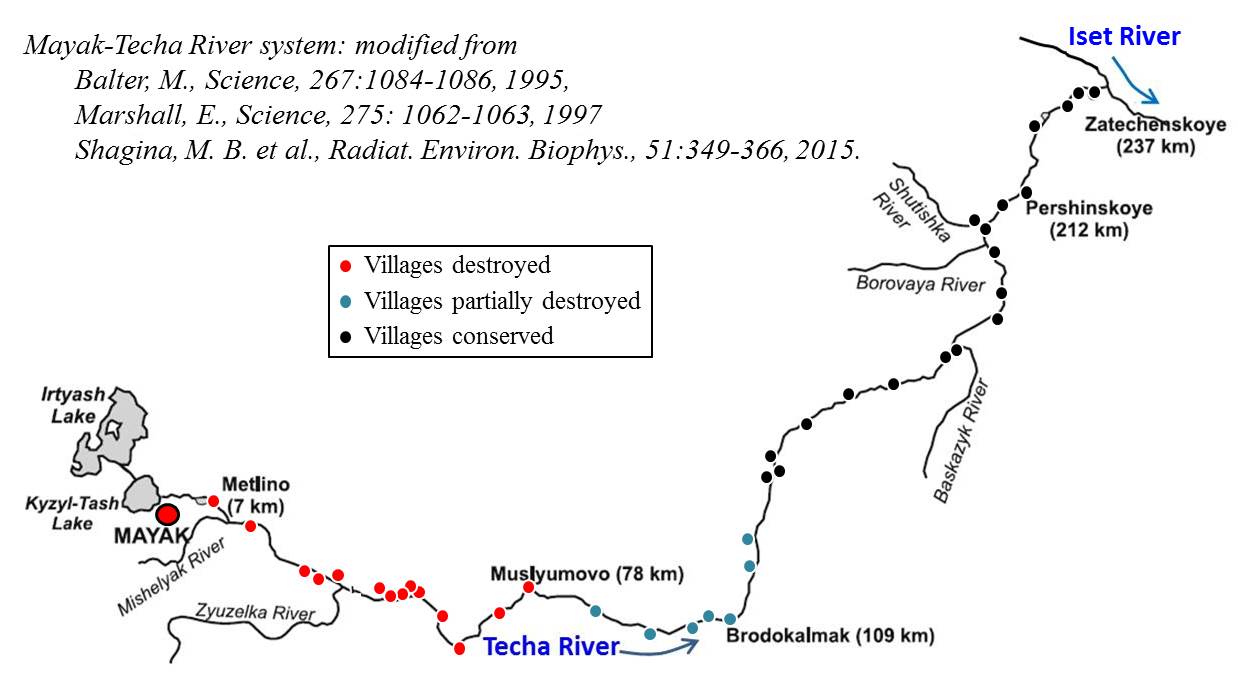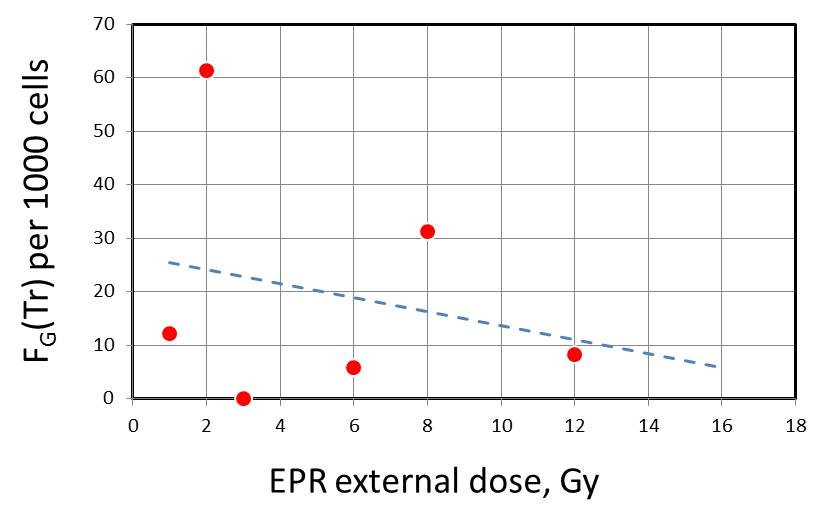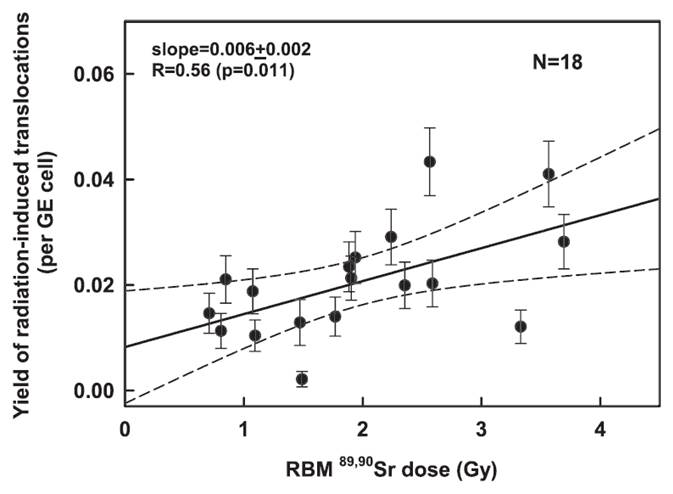Scenario
The nuclear-industrial complex known as Mayak Production Association (PMA) was constructed in May 1946 in the province of Cheryabinsk (Southern Urals). MPA was comprised of a radiochemical separation plant (Facility B), isotope plants and uranium-graphite reactors (Facility A), and started the production of weapon-grade plutonium in 1948. The drainage of the area is primarily via Techa River (237 km length). The radiation exposures to the inhabitants alongside the Techa River were in complex pictures.
(1) Discharge of radioactive wastes: While
natural lakes and dammed ponds at the plant site were employed as reservoirs
to manage radioactive effluents, direct discharges of large amount of radionuclides
to the Techa River system occurred between 1949 and 1956; approximately
98% of the total radioactivity being released during 1949-1951. For instance,
over 100 PBq of radioactive material was discharged during the whole period,
causing severe contamination down the entire length of the Techa River.
Of the total activity, ruthenium isotopes (103Ru, 106Ru)
account for over 50% and estimated 12 PBq of 90Sr, 13 PBq of 137Cs,
and alpha emitters (Pu and U isotopes) of 2 TBq were discharged during
1949-1957. The Techa River system was only water source for the residents of
the riverside villages. A total of 124,000 people received external exposure
from 137Cs, 106Ru, 95Zr and other
radionuclides, and internal exposure from ingestion of 89Sr, 90Sr
and 137Cs as well. It has been estimated that about 8% of this population
received doses higher than 1 Gy.
(2) Redistribution of radionuclides by flood:
An extrardinary flood in April 1951 resulted in substantial contamination
of floodplain soil, which continued to increase through October 1951.
(3) Explosion of radioactive wastes (Kyshtym
accident): On 29 September 1957, a chemical explosion of highly radioactive
wastes in 300 m3 tank at the plutonium production center caused approximately 7.4~1016
Bq of nuclear fission products to be dispersed in the atmosphere exposing
270,000 people to radiation. Five years after the accident, the main source of
long-term exposure to humans and the environment was predominantly by 90Sr.
(4) Redistribution of radioactive deposits
by wind: Furthermore, in 1967, the radioactive wastes deposited in the
slit of the dry bed of the lake Karachay was redistributed by the wind
over a wide area previously affected by the 1957 contamination, irradiating
about half a million people with 2.2~1013 Bq.
With these nuclear disasters, a large number of residents of the riverside area have been exposed externally to 137Cs and internally predominantly to 90Sr. In 1952, the discharge of radioactive wastes into the river was prohibited. At the same time, the utilization of river water for living and industry use was prohibited and people were evacuated. (cited from Salassidis et al., Int. J. Radiat. Biol., 74:431-439, 1998; Testa et al., Mutation Res., 401:193-197, 1998).
Excess cancer occurrence has been noticed
in the riverside people as early as in 1960. It called international interest
first in 1990, when Japan-USSR binational symposium was held in Tokyo,
25-29 June, 1990 and later in the International Symposium on "Chronic
radiation exposure: Risk of late effects", Cheryabinsk, 9-13 January,
1995.
Several studies have been performed to examine
chromosome aberration frequencies in peripheral blood lymphocytes of the
residents in the riverside villages of Techa River. Again as in the case
of residents in the contaminated areas due to Chernobyl NPS accident and
cleanup workers, they are unanimously raised a problem of discrepancy between
chromosome-based dose and reconstructed dose, such as no significant elevation
of aberration frequencies, absence of dose-response relationship and/or
severely suppressed chromosome aberration level as compared to reconstructed
physical estimate.




